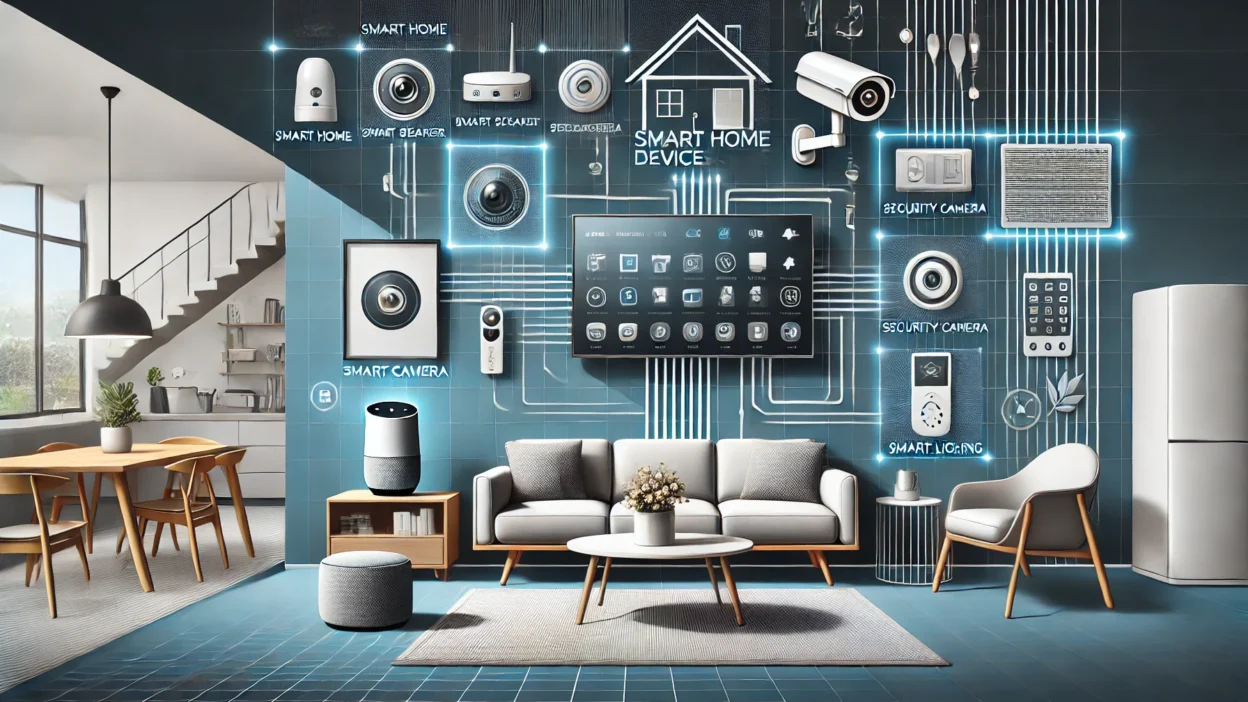Smart homes promise convenience, efficiency, and a touch of futuristic living. Adjusting your thermostat from your phone, seeing who’s at the door while you’re away, or having your lights dim automatically for movie night – it all sounds fantastic. But beneath the shiny surface of innovation lies a darker, more unsettling question: Is your smart home spying on you?
The uncomfortable truth is, it might be. Every connected device, from your smart speaker to your doorbell camera, collects data. And while much of this data is used to provide the very convenience you desire, the potential for misuse, breaches, and a fundamental erosion of your privacy is a very real concern.
The Data Goldmine in Your Living Room
Think about the sheer volume of information your smart home devices gather:
- Audio Data: Your smart speakers (Google Assistant, Alexa, Siri) are always listening for their wake word. But what else are they hearing? Conversations, background noise, even your personal habits. While companies state they only record after the wake word, incidents of accidental recordings and human review of snippets have raised eyebrows.
- Video Data: Smart doorbells and security cameras capture footage of who comes and goes, inside and outside your home. This provides peace of mind, but also a constant visual record of your life that could be accessed by unauthorized parties or even law enforcement without your explicit consent.
- Location Data: Smart thermostats, lighting systems, and even robotic vacuums can track your presence and movement within your home. This builds a detailed picture of your routines – when you’re home, when you’re out, and even which rooms you frequent.
- Usage Data: Every interaction you have with a smart device – what you ask your smart speaker, what shows you watch on your smart TV, how often you open your smart fridge – creates a data trail. This data can be used to build comprehensive profiles of your habits, preferences, and even your mood.
The Hidden Risks You Need to Know About
Beyond the mere collection of data, several significant privacy risks loom:
- Data Breaches: No system is 100% secure. A cyberattack on a smart device manufacturer or a cloud service could expose your most intimate home data to malicious actors. Imagine your security camera footage or your personal conversations being leaked online.
- Third-Party Access: Many smart devices rely on third-party services for functionality. This means your data might be shared with advertisers, data brokers, or other entities you’ve never directly consented to. Reading those lengthy terms and conditions is crucial, but often overlooked.
- Lack of Transparency: It’s often unclear exactly what data is being collected, how it’s being used, and who it’s being shared with. Companies’ privacy policies can be vague and difficult to interpret, leaving consumers in the dark.
- Government and Law Enforcement Access: In some jurisdictions, law enforcement can compel companies to hand over data from smart devices, even without a warrant in certain circumstances. Your home, once considered your private sanctuary, could become a source of evidence against you.
- Targeted Advertising and Manipulation: The detailed profiles built from your smart home data are incredibly valuable for advertisers. You might find yourself inundated with hyper-targeted ads, or even subtly manipulated by algorithms designed to influence your purchasing decisions or habits.
- Resale and Rental Property Concerns: If you’re renting a smart home or buying one with pre-installed smart devices, you might inherit a whole host of privacy issues without even realizing it. Who has access to the previous owner’s data? Is the system properly reset?
Taking Control of Your Smart Home Privacy
While the risks are real, you don’t have to abandon smart home technology entirely. Here’s how you can take proactive steps to protect your privacy:
- Do Your Research Before You Buy: Don’t just look at features. Investigate a device’s privacy policy, security track record, and update frequency. Opt for reputable brands with strong commitments to privacy.
- Read the Privacy Policies (Seriously!): It’s tedious, but understanding what data a device collects and how it’s used is paramount. If you’re uncomfortable with anything, don’t buy it.
- Adjust Privacy Settings: Many smart devices have customizable privacy settings. Take the time to explore them and disable any features you don’t need or aren’t comfortable with (e.g., voice recording retention, camera recording).
- Use Strong, Unique Passwords and Two-Factor Authentication (2FA): This is basic cybersecurity hygiene, but it’s especially critical for devices connected to your home network.
- Regularly Update Firmware and Software: Manufacturers often release updates to patch security vulnerabilities. Enable automatic updates if available, or manually check for them frequently.
- Consider a Separate Guest Network: Isolate your smart devices on a separate Wi-Fi network to prevent potential breaches from affecting your primary devices.
- Be Mindful of Voice Commands: Avoid discussing sensitive information near smart speakers. Mute them when you don’t need them.
- Review and Delete Data (When Possible): Some platforms allow you to review and delete your recorded voice commands or camera footage. Make use of these features.
- Disconnect When Not in Use: If you’re not using a particular smart device for an extended period, consider unplugging it or disconnecting it from your network.
- Be Skeptical of “Free” Services: If a smart device or service is free, chances are your data is the product.
Your smart home should be a haven of convenience, not a surveillance trap. By being informed and proactive, you can enjoy the benefits of connected living without sacrificing your fundamental right to privacy. The power to protect your digital footprint in your own home lies firmly in your hands.



